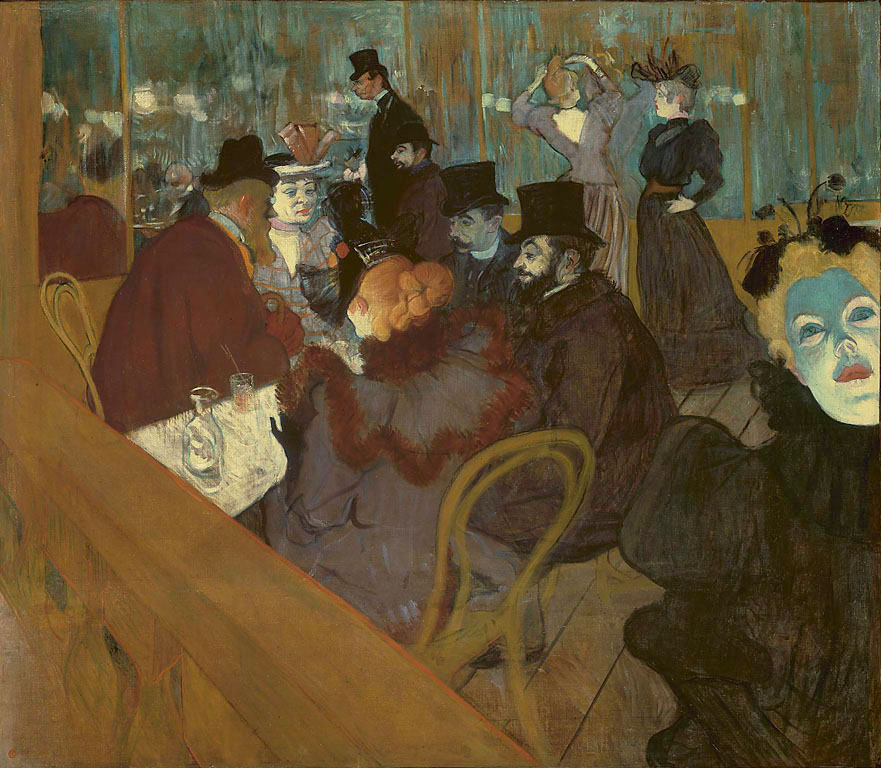On the hundredth anniversary of the death of Henri de Toulouse-Lautrec, aged 37, from a stroke bought on by the combined effects of chronic alcoholism, syphilis and a genetically inherited bone disorder, this week’s picture is his well known oil painting, Au Moulin Rouge.
The setting is Paris’s most celebrated nightclub, which first opened its doors in 1889. The creation of Joseph Oller, one of the inventors of modern showbusiness, this highly popular establishment was famous for its vast and cavernous dance hall, illuminated by the new electrical lighting, where all kinds of amusingly risque entertainments took place. It might be La Goulue and La Macarona performing their famous belly dance; or Jane Avril (“Mad Jane”) kicking up her heels; or the entire chorus line showing enough petticoat to rig a three-masted sloop.
“Women, women, women. There seemed no end of them,” wrote W.C. Morrow, describing a performance of the can-can at the Moulin Rouge in his Bohemian Paris of Today (a book published while Toulouse-Lautrec’s canvas was still drying in the artist’s studio): “Light-footed women were amusing circles of onlookers with spirited dancing and reckless high-kicking; and, being adepts in their peculiar art, were so flashing and illusory that an attempt to analyse their movements brought only bewilderment. No bones seemed to hamper their swiftness and elasticity. The flash of a black stocking would instantly dissolve into a fleecy cloud of lace, and the whirling air was a cyclone; and there upon the floor sat the dancer in the ‘split’, looking up with a merry laugh, flushed cheeks, and sparkling eyes… then over her would sweep a whirlwind of other dancers, and identities would become inextricably confused.”
Toulouse-Lautrec’s focus, in Au Moulin Rouge, is not on the spectacle but its aftermath. The scene is set away...

ITP 73: Au Moulin Rouge by Henri de Toulouse-Lautrec
09-09-2001

